Builders, architects, and engineers are exploring faster ways to bring bold designs to life with 3D printing leading the way. With advancements in robotics, 3D printing construction is quickly gaining traction due its ability to create innovative structures at a fraction of the cost of traditional building methods. The latest example is the Tor Alva, a 98-foot sculptural tower in Mulegns, Switzerland, now recognized as the tallest 3D printed tower in the world.
Quick look:
- Tor Alva in Switzerland is the tallest 3D printed tower in the world at 98 feet, built using sand-based printing and computational design.
- 3D printed construction offers faster build times, reduced labor, and custom architectural freedom with minimal waste.
- Projects from California to Dubai show how the technology is being used for housing, cultural spaces, and disaster relief.
- Challenges remain, including limited materials, building code compliance, and scalability for high-rise structures.
Tor Alva: The world’s tallest 3D printed building
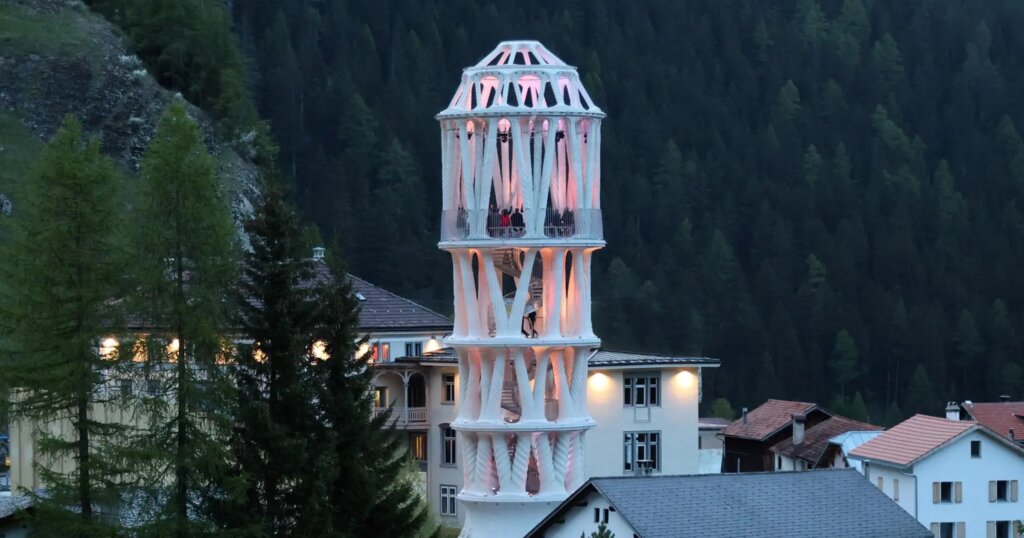
Courtesy of https://www.tor-alva.ch/en/.
Designed by architect Michael Hansmeyer in collaboration with ETH Zurich, Tor Alva, or “The White Tower”, pushes the boundaries of what’s possible with 3D printed architecture. Built with 32 intricately formed columns and created using a custom sand-based printing technique, the structure combines cultural preservation with digital precision. As more firms turn to construction-scale 3D printing, like COBOD and Mighty Buildings, the question isn’t whether the future is printed. It’s how far we can take it.
Standing at 30 meters (about 98 feet), Tor Alva is now recognized as the tallest 3D printed building in the world.
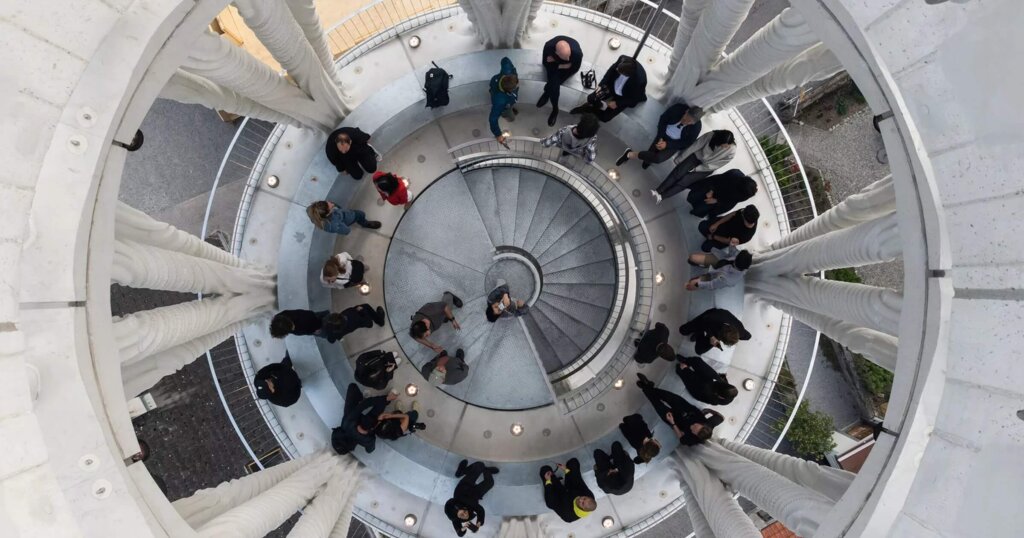
Courtesy of https://www.tor-alva.ch/en/.
Located in Mulegns, Switzerland, the tower was designed by architect Michael Hansmeyer in partnership with ETH Zurich. Using computational design and a sand-based 3D printing process, the team created 32 intricately sculpted columns that give the tower its striking, organic form. The method allowed for high precision and zero material waste, completing the structure in just ten weeks.
Tor Alva is both a structural achievement and a symbol of renewal for the tiny village of Mulegns. As part of a cultural revival project, the tower weaves together the region’s rich heritage with cutting-edge design. Now used as a venue for concerts and art installations, it draws fresh energy, new visitors, and visibility to a place that might have otherwise been forgotten.
Described as both “mesmerizing” and structurally ambitious by observers in architecture and tech media, the tower marks a turning point in how we think about printed buildings.
The evolution of 3D printing in architecture
What started as a fringe experiment, printing small-scale walls and decorative structures, has quickly grown into a viable method for building full-sized homes, offices, and now towers like Tor Alva. Over the past decade, 3D printing in architecture has moved from the margins to the mainstream, thanks to rapid improvements in materials, robotics, and software.
Early efforts faced major hurdles, from weak structural integrity to painfully slow print speeds. Most projects were limited to basic shapes, and very few met building code requirements. As the technology has matured, the shift from prototype to practical has become clear. Today’s 3D printed buildings are fully functional, energy-efficient structures designed for regular use. And with each new project, the line between experimental and essential continues to blur.
Global examples of 3D printed buildings
Whether it’s in the heat of Dubai or the aftermath of a disaster in India, 3D printed buildings are appearing in all kinds of environments. Each project shows how the technology is tailored to meet different challenges, from climate to cost to design intent.
North America
Mighty Buildings has been at the forefront of residential development with sleek, sustainable homes cropping up across California. Their projects focus on reducing waste, cutting timelines, and delivering move-in-ready homes with futuristic appeal.
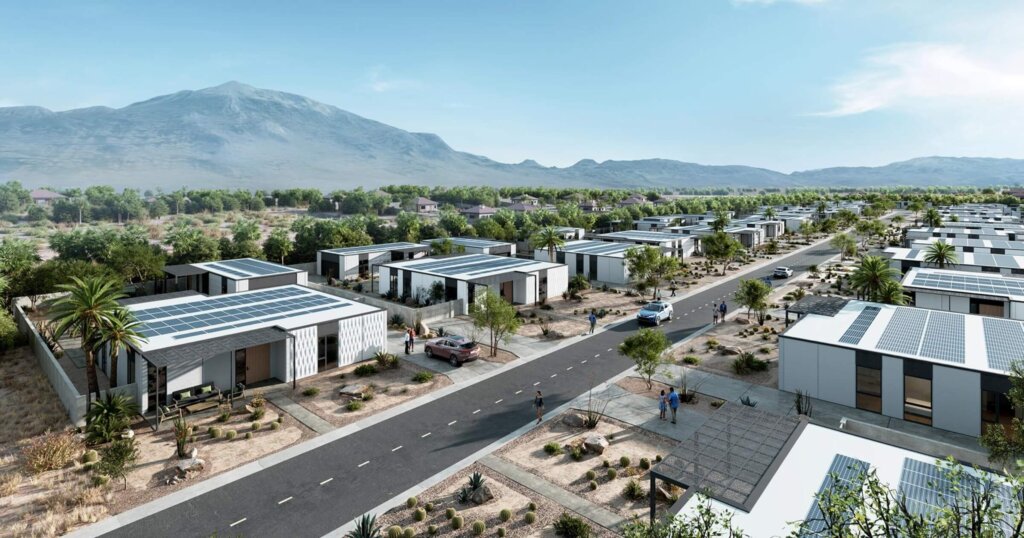
Image courtesy of https://www.mightybuildings.com/
Middle East
In the Middle East, Dubai made headlines with Apis Cor’s 3D printed Municipality Office, one of the earliest examples of a large-scale, fully operational printed building. The city continues to invest in printed construction as part of its larger smart city vision, aiming for 25% of new buildings to be 3D printed by 2030.
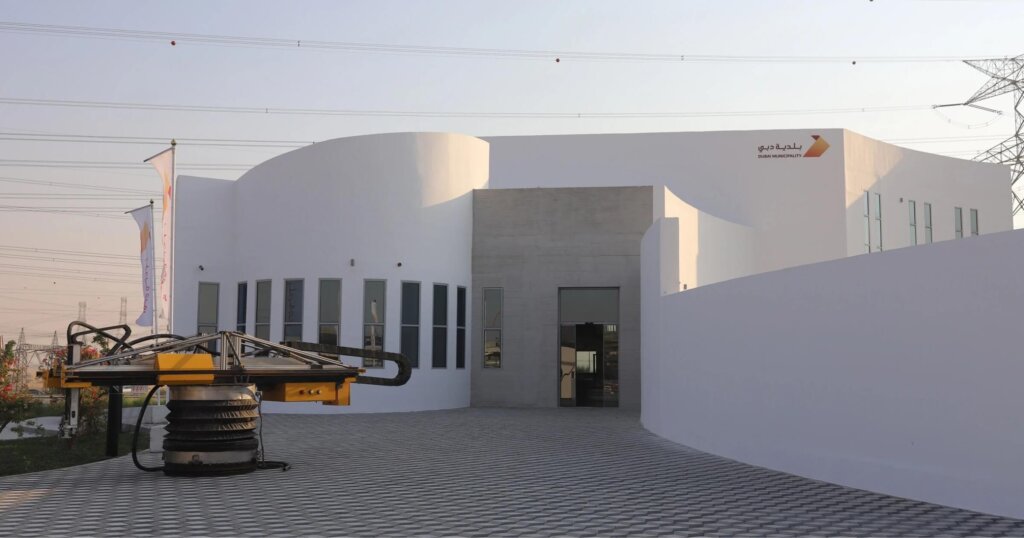
Image courtesy of Apis Cor.
Europe
Europe is home to both the elegant Tor Alva in Switzerland and Project Milestone in Eindhoven, Netherlands, a five-phase residential project that blends robotic printing with traditional building methods. These projects are helping to redefine how Europe approaches sustainable housing and architectural design.
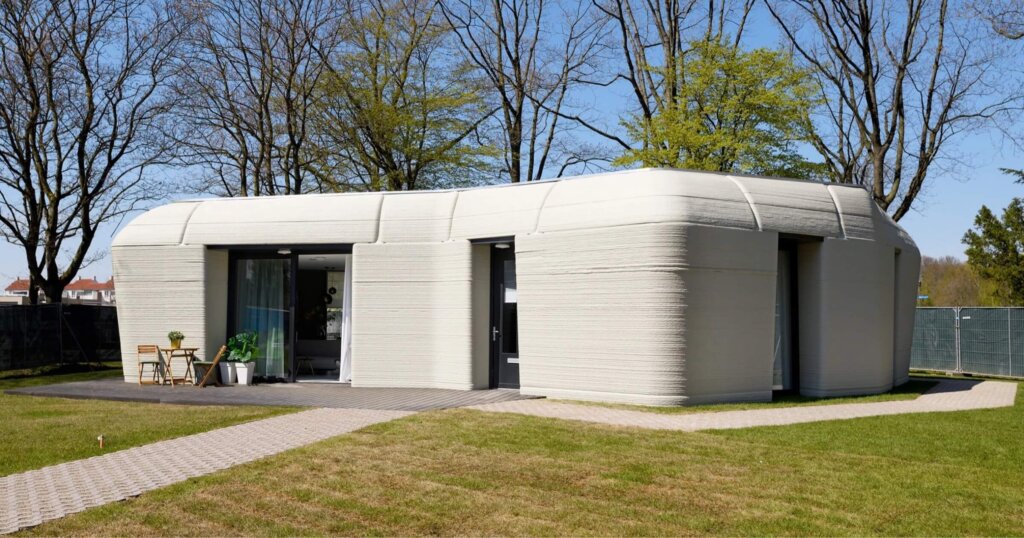
Photo courtesy of project milestone.
Asia
In Asia, India’s Tvasta Manufacturing Solutions has designed small, durable 3D printed homes designed for fast shelter in disaster-affected areas. Their compact, modular profile are cost-effective and resilient, showing how 3D printing can be a tool for humanitarian impact.
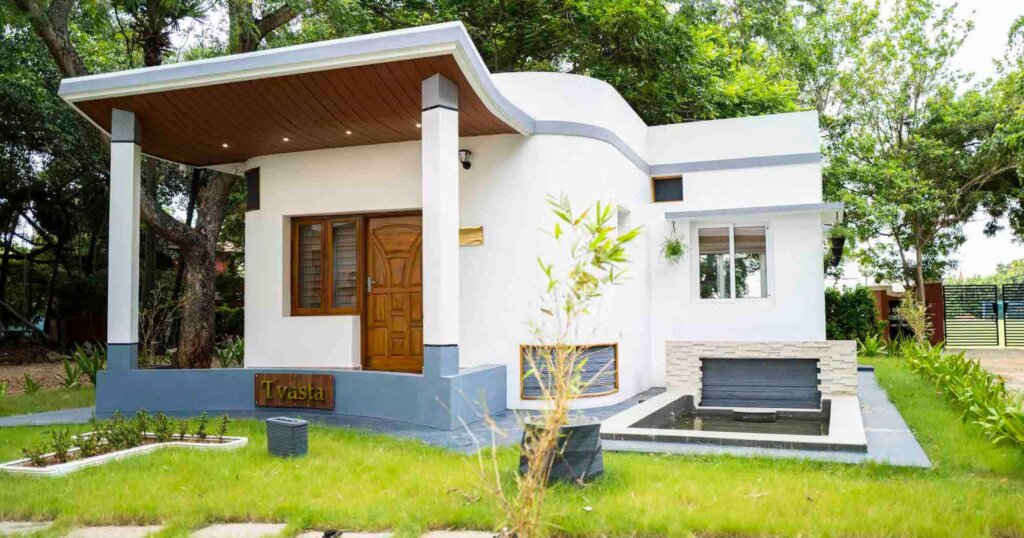
Photo courtesy of Tvasta Construction.
For more incredible examples, take a look at some of the coolest 3D printed housing projects in North America; proof that this technology is no longer a concept of the future, but a real-world solution shaping the way we build today.
The future of 3D printed architecture
As 3D printing technology evolves, the possibilities for architecture are expanding fast. With automation and AI guiding the design and fabrication process, builders can create complex, customized forms with little to no human intervention, speeding up timelines while unlocking entirely new design languages.
On the materials front, researchers are developing more eco-friendly and resilient options, from bio-based inks to recycled plastic blends that reduce environmental impact. These innovations could make 3D printing one of the greenest ways to build, especially in areas where traditional construction is costly, slow, or unsustainable.
This adaptability has major implications for the future. 3D printed structures are already being tested for use in disaster relief, where rapid deployment and low cost can save lives. Some agencies are even exploring its potential for space exploration, with concepts for lunar and Martian habitats built from locally sourced regolith. Closer to home, the technology remains a strong contender for affordable housing, thanks to its reduced labor needs and practical material use.
Still, for 3D printing to scale meaningfully, building codes and regulations will need to catch up. Many jurisdictions don’t yet have standards for printed structures, and until those frameworks are in place, adoption will remain limited.
Bottom line
As structures like Tor Alva push architectural and technological boundaries, it’s clear that 3D printed construction is a fast-moving reality with the potential to reshape how we build, design, and live. While challenges remain, the promise of faster builds, sustainable materials, and affordable housing solutions makes this one of the most exciting frontiers in the industry.
Want to stay ahead of the curve? Subscribe to our Under the Hard Hat newsletter for more insights into the tools, tech, and trends shaping the future of construction.


